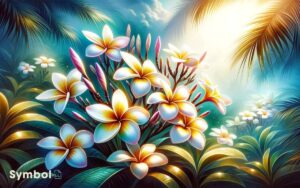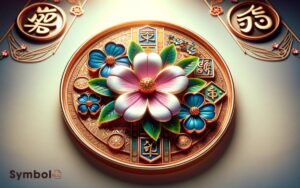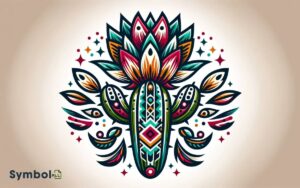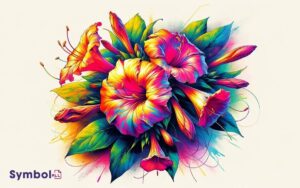What Flower Symbolizes Free Spirit? Sunflower!
You’ll find that the sunflower uniquely symbolizes a free spirit. Its vibrant yellow petals radiate energy and positivity, closely tied to freedom and individuality.
Sunflowers exhibit heliotropic behavior, rotating their heads to track the sun’s movement across the sky.
This distinctive trait mirrors the free-spirited pursuit of light and truth. Scientifically, their adaptability and resilience in various environments underscore their symbolic representation of autonomy and perseverance.
Additionally, their historical cultivation by Indigenous Americans for seeds and oil highlights a legacy of resourcefulness and adaptability.
These biological and historical facets of sunflowers offer a deeper insight into their significance as emblems of a free spirit.
This understanding opens avenues for further exploration into the connection between flora and personal freedom.
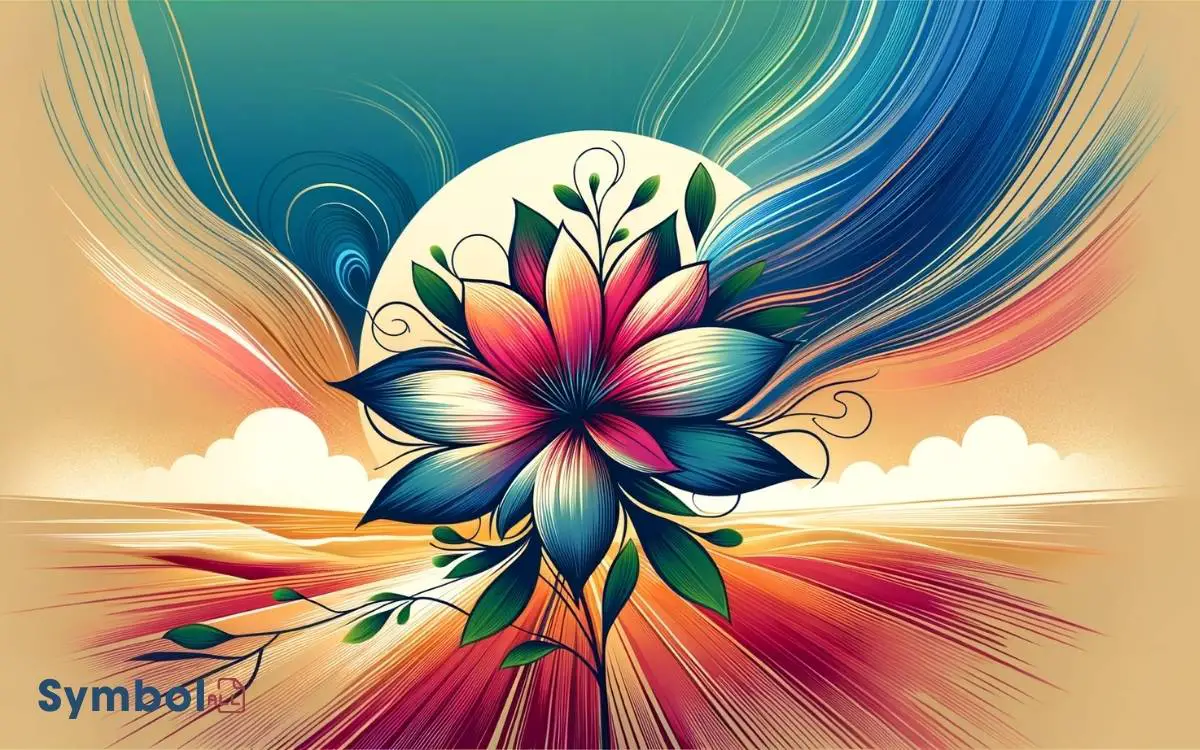
Key Takeaways
The Essence of Freedom
In exploring the essence of freedom, it’s critical to understand its multifaceted nature, which encompasses both the absence of restriction and the power of self-determination.
You’ll find that freedom isn’t just about the physical ability to move or act without constraint; it’s equally about having the autonomy to make choices that align with one’s values and desires.
This concept is central to understanding why certain flowers, through their growth patterns and resilience, symbolize a free spirit.
Scientifically, the characteristics of these flowers such as their ability to thrive in various environments and their resistance to being confined mirror the human yearning for freedom.
Analyzing their biological adaptability and resilience provides a tangible representation of what it means to live unrestrictedly and with purpose.
Historical Significance
Understanding the essence of freedom and its representation through certain resilient flowers leads us naturally to explore their historical significance, highlighting how cultures worldwide have revered these symbols of a free spirit for centuries.
Delving into the annals of history, we uncover that these flowers, often embodying resilience and adaptability, weren’t merely decorative. They served as potent emblems in social movements, signifying the collective yearning for liberation and autonomy.
Scientific analysis shows that their robust nature allowed them to thrive in diverse climates, mirroring the universal appeal of freedom across different societies.
This adaptability also symbolized the inherent desire for growth and exploration, core tenets of a free spirit.
Therefore, these flowers’ historical significance is deeply intertwined with human aspirations for freedom, transcending mere aesthetic appreciation.
The Sunflower: A Symbol
You’ll find that the sunflower, with its origins tracing back to North America over 4,500 years ago, stands as a profound emblem of independence and self-sufficiency.
Its unique heliotropic behavior, turning to follow the sun across the sky, symbolizes a relentless pursuit of light and truth, mirroring the qualities of a free spirit.
This discussion will analyze how the sunflower’s biological and historical attributes contribute to its status as a symbol of autonomy and resilience.
Sunflower Origins Explored
Tracing the sunflower’s origins reveals its deep-rooted symbolism as a universal emblem of freedom and resilience. This plant’s journey from its wild form to a cultivated symbol encompasses its adaptability and strength.
Analyzing the sunflower’s history offers insights into its representation:
- Native to North America: It was first domesticated by Indigenous Americans over 4,500 years ago for its seeds and oil.
- Spread to Europe: The sunflower was brought to Europe in the 16th century, where it gained popularity for its aesthetic and agricultural value.
- Genetic Diversity: Its ability to thrive in varied environments showcases its robust genetic makeup.
- Symbolic Growth: Through selective breeding, its size and yield have dramatically increased, mirroring humanity’s growth and exploration spirit.
Understanding these facets illuminates why the sunflower symbolizes a free spirit, supported by its historical and biological resilience.
Emblem of Independence
Exploring the sunflower’s journey from its origins to its role in human culture reveals its emblematic representation of independence. You’ll find that the sunflower, with its robust growth and ability to thrive in diverse conditions, symbolizes autonomy and self-sufficiency.
Its unique heliotropic movement, turning towards the sun throughout the day, underscores a metaphor for following one’s path and seeking light, embodying the essence of independence.
Scientifically, this movement is known as phototropism, reflecting an adaptive strategy for maximizing photosynthesis.
Moreover, the sunflower’s hardy nature, growing in environments where others falter, highlights resilience and the capacity to stand alone. This botanical marvel, hence, serves as a powerful symbol for those valuing freedom and self-direction.
Cultural Representations
In various cultures, the flower commonly associated with the essence of a free spirit is represented by distinct symbols and meanings, reflecting a rich tapestry of beliefs and values.
- Native American Culture: Often, flowers like the Wildflower symbolize resilience and adaptability, embodying the principle of thriving in diverse environments and conditions.
- Japanese Tradition: The Cherry Blossom, or Sakura, represents the ephemeral nature of life and beauty, highlighting the free spirit’s acceptance of life’s transience.
- Victorian Era: Flowers were coded with specific meanings. The Dandelion, for instance, was a symbol of wishes coming true, embodying hope and the pursuit of dreams.
- Modern Interpretations: Lavender has come to symbolize calmness, purity, and the serene freedom of a clear mind, aligning with contemporary values of inner peace and self-direction.
Physical Characteristics
The physical characteristics of flowers associated with a free spirit, such as petal arrangement and color variation, offer insights into their symbolic meanings and ecological roles.
| Characteristic | Function | Symbolism |
|---|---|---|
| Petal Arrangement | Attracts pollinators | Unity, diversity |
| Color Variation | Signals readiness to pollinators | Emotional depth, complexity |
| Stem Flexibility | Allows movement in wind | Adaptability, resilience |
You’ll find that these physical traits are not just crucial; they serve essential functions in the flower’s life cycle and its interaction with the environment.
For example, the diverse colors of petals not only captivate human admirers but also play a crucial role in attracting various pollinators, ensuring the plant’s reproductive success.
Similarly, stem flexibility isn’t merely a physical characteristic; it symbolizes the flower’s ability to withstand and adapt to changing conditions, embodying the essence of a free spirit.
Geographic Distribution
Flowers that symbolize a free spirit thrive across diverse global landscapes, each region contributing unique environmental factors that influence their growth and distribution.
Understanding their geographical spread helps you appreciate their adaptive capabilities and significance in various cultures.
- Temperate Zones: These flowers often favor moderate climates, showing resilience and versatility.
- Tropical Regions: In these areas, they exhibit vibrant colors and diverse forms due to the high humidity and sunlight.
- Arid Environments: Surprisingly, some species flourish here, developing drought-resistant features.
- Mountainous Areas: Elevation and cooler temperatures give rise to distinct varieties that symbolize endurance and freedom.
This distribution highlights their adaptability and the symbolic meaning they hold across different cultures, reflecting the essence of a free spirit in nature’s vast canvas.
Sunflower in Art and Literature
Throughout history, artists and writers have frequently depicted sunflowers as symbols of optimism and vitality, exploring their aesthetic and metaphorical significance in various cultural contexts.
In the domain of visual arts, Vincent van Gogh’s ‘Sunflowers’ series stands as a quintessential example, where the vibrant yellow blooms represent both the fleeting nature of life and the pursuit of light, mirroring the human desire for spiritual and intellectual enlightenment.
Literary works, too, have imbued sunflowers with deep symbolic meanings. For instance, in Allen Ginsberg’s poem ‘Sunflower Sutra,’ the flower becomes a metaphor for the human soul—imperfect, yet yearning for a connection with the divine.
These artistic and literary explorations highlight the sunflower’s role as a powerful emblem of resilience, individuality, and the eternal quest for freedom and understanding.
Gardening Tips
To cultivate a flower that epitomizes the essence of a free spirit, you must first confirm the soil meets specific criteria for nutrient content, pH level, and drainage capability.
Establishing a consistent watering schedule that adapts to the plant’s growth phase and environmental conditions is crucial for ideal development.
These foundational steps in gardening demand precise attention to detail and an analytical approach to foster the desired floral symbol of freedom.
Soil Preparation Essentials
Preparing your garden’s soil is a pivotal step, as it directly influences the health and growth of your plants. The right soil preparation not only provides an essential foundation but guarantees your flowers embody the free spirit you seek.
Here are key essentials:
- pH Testing: Determine your soil’s pH levels to identify its acidity or alkalinity, significant for nutrient availability.
- Organic Matter Addition: Incorporate compost or aged manure to improve soil structure and fertility.
- Aeration: Use a garden fork to loosen compacted soil, enhancing oxygen penetration and root growth.
- Weed Removal: Eliminate weeds to prevent competition for nutrients and water.
These steps, grounded in scientific principles, ensure your soil provides the best possible environment for robust plant development, embodying the essence of a free spirit.
Watering Schedule Guidelines
Having established a solid foundation with proper soil preparation, it’s essential to discuss the best watering schedule to maintain the liveliness of your garden plants. The ideal regimen varies, depending on factors such as plant species, climate, and soil type.
However, a general guideline suggests deep, infrequent watering to encourage robust root growth. This method involves saturating the soil to a depth of 6-8 inches, allowing it to dry between sessions.
Most garden plants thrive with a weekly schedule, though this adjusts in extreme heat or drought.
Utilize a moisture meter for precision, aiming for a consistent moisture level that supports plant health without promoting root rot. Adhering to these guidelines guarantees your garden remains vibrant, reflecting the free spirit symbolized by its flowers.
Varieties and Colors
Often, the free spirit symbolized by flowers is vividly expressed through a diverse palette of colors and varieties, each with its unique significance and botanical characteristics.
As you explore the world of flora representative of a free spirit, consider the following key examples:
- Lavender: Known for its calming scent, lavender’s purple hues signify grace and elegance, embodying tranquility and a free-spirited nature.
- Sunflower: With its vibrant yellow petals reaching towards the sun, it symbolizes positivity, strength, and freedom.
- Wildflower Mixes: Embrace the essence of a free spirit through a spontaneous assortment of colors and types, each symbolizing resilience and adaptability.
- Daisy: White petals surrounding a bright yellow core reflect purity, innocence, and an unbridled joy for life.
Each variety and color contributes to the rich tapestry that defines the concept of a free spirit in the botanical world.
Symbolism in Modern Times
In modern times, flowers continue to play a pivotal role in symbolizing the ethos of a free spirit, reflecting societal values and personal identities through their unique meanings and appearances.
You’ll find that each flower’s characteristics are deeply interwoven with cultural narratives and personal expressions, making them more than just botanical specimens; they’re symbols of individuality and freedom.
| Flower | Meaning | Cultural Significance |
|---|---|---|
| Lavender | Calm, serenity, openness | Promotes mental wellness |
| Wildflowers | Resilience, independence | Symbol of free spirit |
| Sunflower | Positivity, strength | Represents energy |
These flowers embody traits that resonate with contemporary ideals of living freely and authentically.
Analyzing their symbolism reveals an intricate blend of historical roots and modern interpretations, offering a profound insight into the human desire for expression and connection with nature.
Free Spirits in Nature
You’ll find that nature’s wildness offers a profound reflection of freedom, with plants and flowers exhibiting an untamed beauty that resonates with the essence of a free spirit.
This unfettered floral expression, thriving without human intervention, exemplifies resilience and adaptability in diverse ecosystems.
Analyzing these natural phenomena reveals insights into how flora embody and communicate the concept of liberty through their very existence.
Embracing Natures Wildness
Delving into nature’s wildness allows free spirits to explore ecosystems thriving beyond human touch, revealing a symbiotic relationship between untamed flora and fauna.
You witness firsthand how each element within these habitats contributes to a finely balanced ecosystem, where every plant and animal has a role that guarantees survival and growth.
This understanding underscores the importance of conservation efforts, as it becomes clear that even the smallest organism plays a significant part in the health of our planet.
- Biodiversity: The variety of life is vital for ecosystem resilience.
- Interdependence: Species rely on each other for food, shelter, and pollination.
- Adaptation: Plants and animals evolve to survive in their specific environments.
- Ecosystem Services: Natural habitats provide invaluable services, such as water purification and climate regulation.
Unfettered Floral Expressions
Floral expressions in nature, reflecting the essence of free spirits, showcase an array of adaptations and interactions that highlight the complexity and resilience of ecosystems.
You’ll find that each species has evolved distinctive mechanisms for survival and reproduction, embodying the untamed spirit of nature.
These mechanisms include varying pollination strategies, from the allure of vivid colors to the emission of unique scents, each tailored to attract specific pollinators.
Additionally, the adaptive strategies of seed dispersal, whether through wind, water, or animal assistance, guarantee the propagation of these free spirits across diverse environments.
This intricate dance of adaptation and interaction not only sustains but also enriches ecosystems, revealing the profound interconnectedness and the indomitable spirit of the floral world.
Embracing the Free Spirit
Embracing your free spirit involves understanding the intricate relationship between self-expression and the natural symbols that embody it, such as certain flowers renowned for their representation of freedom and independence.
To explore further:
- Floral Selection: Choosing flowers like the wildflower signifies a preference for resilience and adaptability, mirroring a free spirit’s nature.
- Color Significance: Opting for vibrant colors reflects an energetic and passionate disposition.
- Growth Patterns: Observing how these flowers thrive in unstructured environments can inspire you to embrace your own path of least resistance.
- Symbolic Associations: Understanding the historical and cultural contexts of these flowers deepens your connection to the concept of freedom they represent.
These elements collectively enhance your appreciation of the symbiotic relationship between your free spirit and the botanical world.
Conclusion
You might argue that the sunflower, with its bold presence, isn’t subtle enough to represent a free spirit. However, its resilience, adaptability, and the way it turns towards the sun epitomize the essence of freedom.
Sunflowers thrive in diverse environments, demonstrating a vast genetic variability that mirrors the unique paths of free spirits. Their vivid varieties and colors symbolize the diversity within the free-spirited community.
Embracing the sunflower means acknowledging the complexity and beauty of living freely, unbound by conventional constraints.

